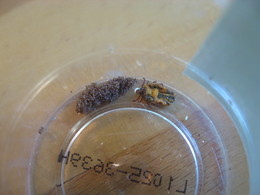Saturday was a quiet day for those of us living at the town hall. Katherine biked in to the Hjelm house to work on her aphid addition and exclusion project and I spent a few hours at Hegg Lake repainting the last of the bracts from my crosses and harvesting the first pallida head. Kelly and Andrew were both away for the day, and everyone else took a needed break and spent the day relaxing.
In the evening we took out our instruments and all played together for the first time of the summer. I’m not sure how it worked out that we didn’t get around to playing together until Lydia’s last night, but somehow that’s just how it worked out. I’m glad we did get the chance to all play together.
|
||||
|
Some of my painted bracts
playing music, photo courtesy of Jill
A bittersweet day for the Echinacea Project crew, we returned to the Hjelm house feeling both proud that our poster presentations went so well, and sad that the summer is coming soon to a close for some of us. We spent the morning tying up loose ends on our projects, working on project status forms, and doing a little cleaning and organizing. I made an exciting discovery while following up on a comment I received on Thursday. It turns out that i missed a few pollinators when going through the many hours of video, so now I have data for for three more pollinator visits, bringing my sample size to 29 bees! Yay! After lunch We all worked together to complete an ant/aphid survey for Katherine’s experiment, harvest heads in CG1 and CG2, and collect a pail full of Bouteloua seeds from CG1. We finished the week off right with rootbeer floats as a farewell celebration for Lydia on her last day working on the project. At 6:30 this morning we piled into the car, headed to the University of Minnesota in Minneapolis, and presented our posters. Although the symposium was dominated by pre-meds, it was a good experience for us to explain our research to undergraduates with different focuses. Next week Andrew and I are off to Chicago to present again at the Chicago Botanic Garden. It was a dark and stormy morning. With the exception of Jill, Maria, and I, the members of team Echinacea bided their time at the old town hall waiting for the rain to diminish. The three of us had indoor tasks to work on–specifically, sorting ants and entering data. After the sky had exhausted itself, a group of us went to a large site at East Elk Lake Road to search for flowering plants for the annual Echinacea demography census. We had searched the site before, but the cloud cover made prime conditions for finding Echinacea among the shrubs and trees. Stuart, Maria, and Andrew went to another large and difficult-to-search site (Aanenson) to take GPS points on plants. After that, several of us began censusing Riley, a roadside remnant. The site is full of flowering plants, many of which are growing in the road. Because of this, many of the plants have lost their heads due to mowing. The team finished Riley in the afternoon, leaving enough time to census a nearby site we call Woody’s. I spent the afternoon excluding aphids from plants in my aphid addition/exclusion experiment. Aphid infestation is clearly on the decline for the season. Each time I perform aphid exclusion, I record the number of aphids present on the plant before I remove them. This time yielded the lowest aphid counts in my exclusion group this summer. I haven’t crunched the numbers yet, but based on my exclusion data I estimate that the peak of aphid season was probably between July 25th and August 1st. That is much earlier than last year, when the peak was between August 12th and 26th. Last Saturday when I was performing aphid additions, I noticed that a lot of the plants in my addition group had colonies of dead aphids. For example, one plant that hosted nearly 2000 aphids on July 21st was down to 7 last Saturday. For an idea of what this transformation looks like, here’s a picture of a dense, thriving aphid colony: And here’s a picture of a colony that has died off: It is unclear why this happens so suddenly, considering the plant is still green. My guess is a surge of defensive chemicals in the plant. On Thursday, all the undergraduates are going to the University of Minnesota for a poster session. They all did a great job on their research projects and put a lot of time and effort into their posters. I wish them all good luck in their presentations and look forward to hearing about their experience. What a day! The kitchen at Town Hall was busier at 7:20 this morning than I’ve ever seen. It seems like everyone had the same idea to get up early and give their poster one last look before submitting it for printing. Thankfully we all got our posters in on time and we are enjoying a nice reprieve from poster-work this evening. At work today, we completed demography on East Riley. There were lots and lots of flowering plants within a meter or so of the road that had been mowed and did not get chance to flower this year. In the afternoon, we worked on more demography at East Elk Lake Road and Around Landfill. In the morning, Stuart told us about some roadwork that was happening along the Douglas-Grant County line by our Landfill sites. Katherine, Jill, and I stopped by to check it out. It looks like the road workers have dug up about 3 meters of roadside along the North-northwest of Landfill site. On the positive side, it’s lucky that this is happening after the plants had finished flowering, but on the negative side, one row of Jill’s pitfall traps have been buried. We met some of the construction workers who told us that they were working to improve the drainage of the road by evening out the roadside ditches. He also showed us the seed they were replanting: a mixture of brome, timothy, alfalfa, and clover among other things. I guess this is a prime example of the habitat fragmentation and altered disturbance patterns that we’re here to study. It’s hard to watch the plants go, but in the long run these disturbances and our ability to monitor if/how the plants recover will teach us how to better manage prairie remnants in order to maintain stable plant populations. Posters, posters, posters. That’s what Saturday was all about for Team Echinacea (mostly). Saturday morning Shona, Kelly, and I broke away from poster monotony and headed to Alexandria to check out the farmers market, later ending up in an antique store trying on hats from the 30s. Here’s what the rest of the gang was up to on Saturday: By the evening, however, everyone was back at town hall glued to our computer screens until the wee hours of the morning. Midnight banana and zucchini bread made by Kelly and Shona kept our spirits up. Here is a link to my poster! Wow! Last year my last day of field research was a harvest day in September and I took heads from plants in the common garden and the last one from Hegg Lake plots,. This year we have started harvesting already and there are roughly one-fourth the heads to keep as there were a year ago. I tried but failed to get a good picture of harvesting but Shona clicked a nice one on Wednesday. While the wheat fields get harvested with big machines – some John Deere or Internationals, Echinacea harvesters are more “hands-on” Today was full of re-checks for Team Echinacea. In the morning we finished re-checking all of the locations in the CG-1 experimental plot where we could not find a plant when we were measuring. If plants are not found for three years in a row, then they are considered to be dead. This means that an empty location gets checked five times before it gets a staple! This procedure allows us to be sure that we aren’t just overlooking a small plant that needs to be measured (small plants have important data too!). For the remainder of the morning, all of the undergraduates worked hard on preparing for the University of Minnesota Undergraduate Research Poster Session next Thursday. Many of us are working hard to learn R before Monday when our posters have to be submitted. I believe that opinions are still divided with regard to R (although I personally converted back from the dark side after I finally figured out how to make my graphs work!). We’ll report back later with a final opinion. Since we have been perfecting our re-checking skills in the CG1 experimental plot, Stuart decided we were finally ready to start tackling the CG2 plot at Hegg Lake. Unlike CG1, the Hegg Lake garden does not have nicely mowed rows or staples, which makes it more challenging to measure. However, we did find a fair number of previously overlooked plants this afternoon. To cool off after work, Stuart bought ice cream and root beer for everyone. We all had ginormous root beer floats while trying to find GRE vocab words that could stump Stuart. I think we failed pretty badly. In the end, 2 liters of soda and 5 quarts of ice cream were consumed and good times were had by all! Might I ask how it already got to be August? Time sure seems to fly out on the prairie. To start out with, we continued doing rechecks in the Common Garden. We’ve found about 80 positions that were previously listed as Can’t Find. Yay!! The rest of the morning was spent on individual projects. Katherine worked on her aphid survey in the Common Garden, Jill continued to ID ants from her pitfall traps, and Stuart talked to Andrew, Shona, and I about doing glm’s (generalized linear models) on our data. Hooray for stats! The battle with R continues, though Kelly beat it by producing a pretty snazzy graph. Now for the good part (not that other things weren’t good, but you’ll see what I mean). This afternoon, we started harvesting echinacea heads. If the head looked ready (as in pretty much everything on the plant by the head is brown), we chopped it off in an organized fashion and placed each head in a labeled bag. Here’s a picture of us harvesting! On a more displeasing note, that tick of ours is STILL alive and kicking. Or waving. Or whatever. In the evening, the Wagenii made an appearance at Town Hall to watch the Bee Movie. It was enjoyed by all! |
||||
|
© 2024 The Echinacea Project - All Rights Reserved - Log in Powered by WordPress & Atahualpa |
||||

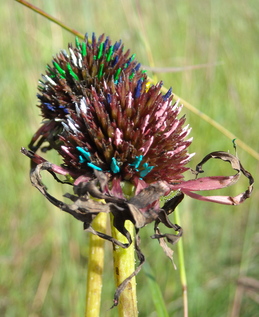
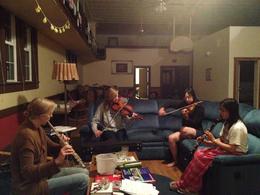
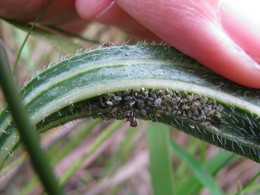
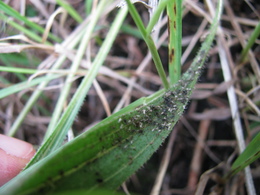
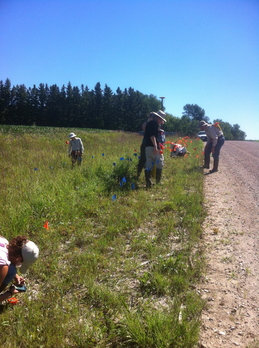
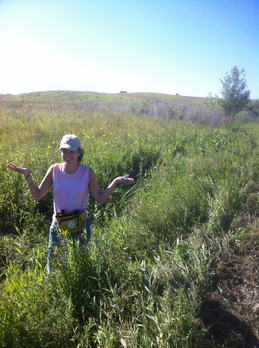
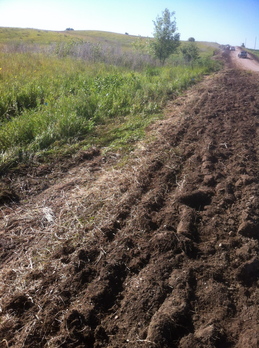
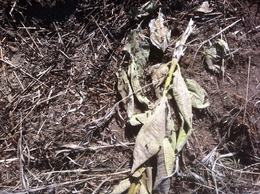

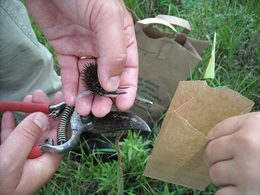
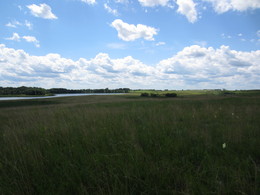
-thumb-260x195-129959.jpg)
